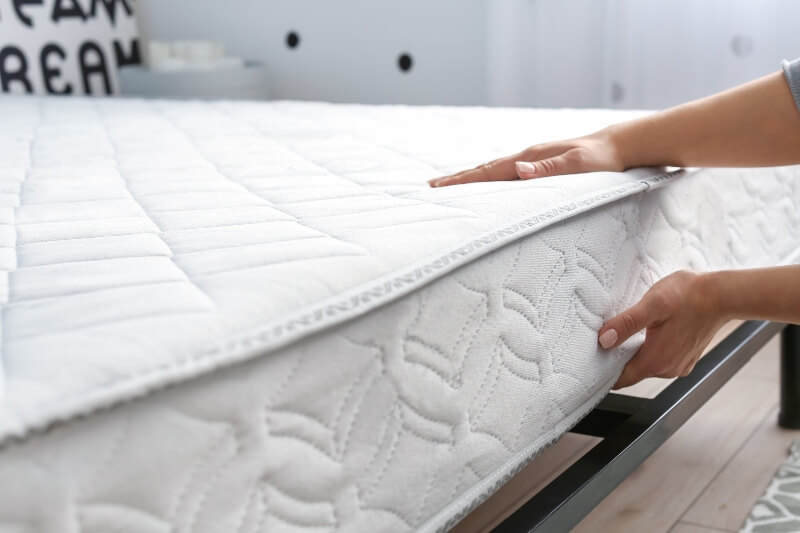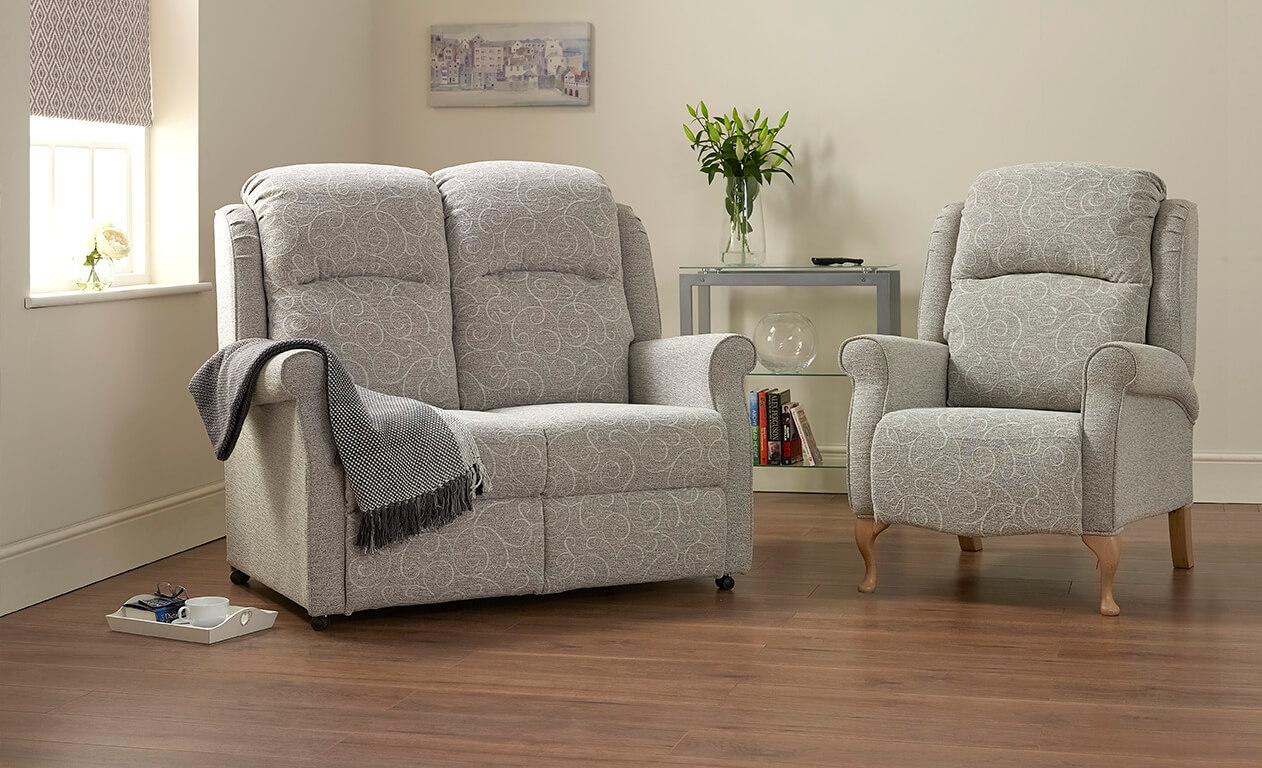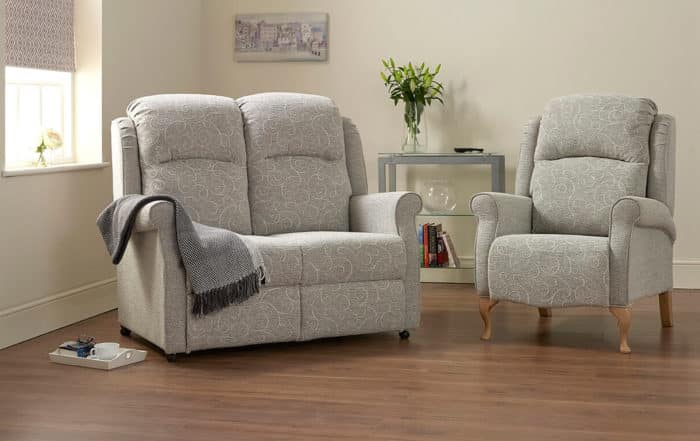Essential Guide to Finding the Best Mattress for an Adjustable Bed
Social Links
Investment in an adjustable bed can be life-changing for those of us who have mobility issues, sleep conditions or just the general aches and pains that come with ageing.
Being able to elevate our legs, head, or both, can significantly improve the quality of sleep, as well as our health during the day. It can also help maintain a degree of independence and make a positive difference to the lifestyle of people who may be bed-bound.
Because everyone has different needs, there are many different types of mobility beds to choose from. Similarly, there are different types of mattress, and the best one for you will depend on your needs and lifestyle.
As an adjustable bed is different from a regular bed, choose a mattress designed to go with it. The mattress needs to be comfortable, supportive, flexible enough to move with the bed and maintain its structural integrity for a long time.
Questions to ask when choosing your adjustable mattress
The Mobility Furniture Company has a full range of adjustable mattresses to choose between, and the best one for you may depend on several factors including any health issues you have, your favoured sleep position, and how much time you spend in bed during the day.
Before you decide, consider these factors based on your current lifestyle:
- Firmness: Ideal mattress firmness depends on how you sleep. Side sleepers need a mattress in the soft-medium or medium-firm range, such as the Saturn, Mars, Mercury and Venus models. Back and stomach sleepers are better off with a medium-firm or firm mattress, such as Mercury, Venus, Solaris or Leda. A heavier person may need a particularly firm and supportive mattress, such as the Jupiter, which supports up to 25 stone.
- Thickness: How thick a mattress should be is an important consideration for an adjustable bed, not just for the level of support but for flexibility as well. While a thinner mattress may adjust more easily than a thick one, it may not last as long. For this reason, all of our standard range adjustable mattresses are between eight and nine inches deep, with varying levels of support from soft to firm. Our homecare specialist bed mattresses are slightly thinner at six inches.
- Pivot points. Adjustable beds tend to have between two and four positioning points, which allows the user to raise their legs, elevate their head or completely sit up in bed. Most mattresses will suit a two or three-point bed. If you require a four-point bed then our homecare mattresses, including the Relievo 4-Turn and Relievo Premium, may be more suitable as they’re slightly thinner.
- Amount of use. Some beds may only be used for sleeping, in which case a mattress with good overall support and the flexibility to be slightly raised at the head and feet may be sufficient. But if the bed will be used during the day, it is likely that the user will want to sit up, in which case they will need a good amount of support to avoid putting pressure on the hips and buttocks. In this situation, the bed will probably be used for eating and drinking in too, so protecting the mattresses against spills may be sensible, as well as bacteria and dirt resistance.
The best mattress for an adjustable bed
The next point to consider is what material you’d like your mattress to be made of. There are several to choose from, covering a range of lifestyle needs, budgets and comfort levels.
1. Pocket sprung
Coil spring mattresses have been around for a little over one hundred years. Steel coils support the internal padding of the mattress, which may be made of a wide array of fabrics.
For an adjustable bed, individual coils (such as in the Leda range) provide more support for the body’s pressure points and can move more easily with the bed. Sprung mattresses are the most budget-friendly option, but still provide good support. All of our sprung mattresses are made with high-quality wool and silk, making them breathable and easy to clean.
2. Memory foam
Memory foam is a blend of polyurethane foam that has a slow response time and low resistance, which is how it moulds to the body’s shape and provides good overall support.
This support helps reduce pressure points, which decreases tossing and turning and the chances of waking up in the night. By holding the body’s heat memory foam can ease and support stiff and painful joints. It also provides good support for the spine, making it an excellent choice for people with back and neck pain.
Memory foam is also a good choice for a double bed – or even a bed that will be shared with a pet. Its slow response prevents motion transfer, so one person’s tossing, turning or getting in and out of bed won’t disturb the other.
As it is highly flexible, memory foam is well suited for adjustable beds. It’s also very durable, and can last up to 15 years if looked after properly.
3. Pocket sprung or memory foam?
Pocket sprung mattresses tend to do better for ease of use with adjustable beds. But memory foam suits couples best due to its ability to keep one side firm while the other moves.
4. Memory foam topped pocket sprung
If you can’t decide between a pocket sprung or memory foam mattress, the Saturn model combines an individually coiled sprung mattress with a thin layer of memory foam on top.
The result is the comfort and cushioning of the memory foam as well as the supportive structure of the springs, which also allows for more airflow and prevents the memory foam from getting too warm.
Combination mattresses support all kinds of sleepers so are a great choice for those who may alternate between side, front and back sleeping during the night, or for two people who have different sleeping styles.
5. Latex
A natural alternative to memory foam, latex also moulds to your body shape and supports pressure points. But it uses the body’s weight rather than its heat to soften, and can therefore mould and return to its natural shape more quickly.
Latex’s flexibility makes it a good match for an adjustable bed. However, it’s slightly more rigid than memory foam and therefore needs to be a bit thinner, making it unsuitable for heavy users. It also doesn’t hold heat like memory foam so may be a good choice for people who prefer a cooler environment to sleep in.
6. GelAir
GelAir is a luxury mattress made with a gel-infused foam. It has many of the same properties as memory foam, but its open-celled 3D structure is more breathable and wicks away moisture, which will keep you cool and dry.
Designed to support the body’s pressure points, GelAir is highly elastic, which not only makes it suitable for an adjustable bed but creates a “bounce-back” feeling, making it easier to change your position in the bed while still minimising motion transfer.
So GelAir is another great choice for a double bed or a bed that may get people sitting on the end of it (or a pet jumping on and off!). The Mobility Furniture Company’s GelAir range includes the softer Eros model and the firm Solaris, both of which have anti-bacterial and dust mite resistant properties.
Individual considerations
1. Maintenance
Being able to keep your mattress clean is essential to prolonging its life and protecting the user from dirt and bacteria. Most mattresses can be maintained with regular vacuuming and spot cleaning, and sprung mattresses can be steam cleaned if necessary (just make sure it’s completely dry before re-making it).
Memory foam, gel foam and latex all have anti-bacterial and anti-microbial properties, and therefore don’t need to be cleaned as often, although all mattresses should be deep cleaned every six months or so to remove stains and any micro-organisms or particles.
Excess moisture in a foam mattress will damage the fibres so if spillages are an issue, consider adding a mattress protector, which can be removed and machine washed.
Sprung mattresses from The Mobility Furniture are reversible and should be turned every six months or so to prolong their life. If the weight of the mattress is an issue, a no-turn mattress in foam or latex might be a better option.
2. Allergies
Dust mites love mattresses – specifically, the warm air cavities within them which are perfect for laying their eggs. For this reason, people with allergies may prefer a memory foam mattress, as the dense structure of the foam inhibits the dust mites and prevents them from nesting.
GelAir and Latex are also dust mite resistant. While pocket sprung mattresses are a favourite spot for mites, frequent vacuuming will is an easy way to deal with them.
3. Mobility issues
All mattresses from The Mobility Furniture Company are designed to provide a high level of support. Users with low-mobility or poor circulation may want to consider a memory or gel foam mattress as these are particularly good at distributing body weight and eliminating pressure points.
For bed-bound users at high risk of or already suffering from pressure sores, the best option may be a Domus air mattress, which works by redistributing air flow around the mattress, eliminating the need to change position and promoting blood flow around the body.
4. Warm environments
Humans naturally sweat when they sleep, especially in warm or humid environments. If excessive sweating is likely, consider a mattress with moisture wicking properties, such as gel-infused foam. These use a capillary action to draw moisture away from the body, make the bed more comfortable and improve quality of sleep by preventing overheating.
5. High care
Where incontinence may be an issue, it’s imperative to protect the mattress from bacteria and odours. If the issue is infrequent, a waterproof mattress protector may be sufficient, but if not then our Relievo 4-Turn and Premium specialist mattresses may be a more suitable option, as they are waterproof and come with removable and washable covers.
6. Lung conditions
Excessive moisture can encourage the growth of bacteria, mould, fungi and mildew, which not only weaken the internal structure of the mattress, but also release spores. These spores will affect the quality of the air you breathe when you sleep and can irritate the lungs, especially in people with asthma.
Memory foam, gel foam and latex have antibacterial qualities, and therefore may be the best choice for avoiding airborne irritants.
7. Sustainability
Some users may wish to consider the environmental impact of their new mattress. Sprung mattresses are the most budget-friendly option and may not last as long as a foam or latex mattress, but they’re made with natural materials such as stainless steel, silk and wool, and can be recycled when it’s time to replace them.
Memory foam is a man-made substance as polyurethane is derived from crude oil, so essentially it’s a form of plastic and won’t biodegrade. However, it lasts for an exceptionally long time and can be recycled, so it’s still a reasonably sustainable choice.
Latex is a good option if you prefer natural materials, as the Venus mattress is made only with natural latex from the sap of rubber trees. The sap is processed into a foam-like substance using a freezing process, which requires energy but no chemicals. It may come with a slightly bigger price tag, but it’s recyclable and biodegradable, as well as being extremely long-lasting, so still represents value for money and the environment.
The bottom line
Whether you have health concerns that will benefit from a more supportive mattress, a bed-bound relative with high-care needs, you want to prolong your independence or you simply want to feel better in the mornings, an adjustable mattress with the right properties can work wonders. Sleep, health and wellbeing should all improve.
It’s important to choose a mattress based on your individual needs and lifestyle, so be sure to try them out before you make a decision. If you can’t, the team at the Mobility Furniture Company can carry out an in-home assessment, go through all the options and make a recommendation.
What’s next? Simply sleep easy knowing you’ve made the right choice for you and your future.
*This website contains general medical information. The medical information is not advice and should not be treated as such. Read our full Medical Disclaimer here.



